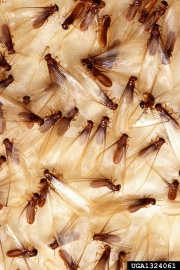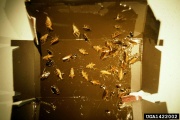Difference between revisions of "Insect traps"
Jump to navigation
Jump to search
m (Text replace - "== Authority ==" to "== Sources Checked for Data in Record ==") |
|||
| Line 8: | Line 8: | ||
== Synonyms and Related Terms == | == Synonyms and Related Terms == | ||
| − | blunder traps (Australian) | + | sticky traps; monitoring traps; pitfall traps; blunder traps (Australian) |
| − | == | + | ==Resources and Citations== |
| − | ISCA Tech: [http://www.iscatech.com/en/info/traps0.html Monitoring Traps] | + | * ISCA Tech: [http://www.iscatech.com/en/info/traps0.html Monitoring Traps] |
| − | + | * M. Gilberg, Monitoring ''Ahtrenus verbasci'' in museum collections using a sex pheromone lure, WAAC 71(2) 1995 | |
| − | * | + | * AMOL reCollections Glossary - http://amol.org.au/recollections/7/b/htm |
| − | |||
| − | |||
[[Category:Materials database]] | [[Category:Materials database]] | ||
Latest revision as of 15:28, 20 September 2022
Description
A device used to attract and retain insects. Insect traps are used to monitor the number and type of insects in an environment. Various insect traps include Sticky traps, light traps, pitfall traps, and pheromone traps. Bait, such as food or pheromones, attracts the insects, then either the trap configuration or adhesives, insecticides, electricity are used to retain or kill the insects.
Synonyms and Related Terms
sticky traps; monitoring traps; pitfall traps; blunder traps (Australian)
Resources and Citations
- ISCA Tech: Monitoring Traps
- M. Gilberg, Monitoring Ahtrenus verbasci in museum collections using a sex pheromone lure, WAAC 71(2) 1995
- AMOL reCollections Glossary - http://amol.org.au/recollections/7/b/htm

